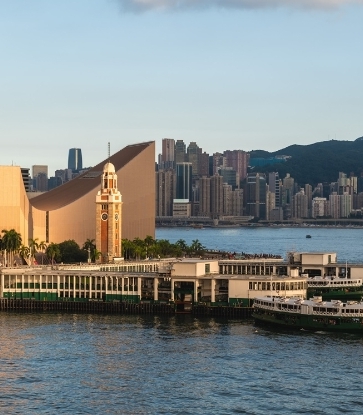
User-generated content is now everywhere. People may now use three, or four, or five sources before they make their choice to dine somewhere. But in this fog of almost unlimited information, the Michelin Guide plays the role of a North Star, or gold standard. At the end of the day you really don’t know who is leading that opinion there. Does he know the restaurant? How does this person eat? Does he share my taste? Michelin’s ability to have about an objective an opinion as possible [is what keeps us relevant and respected]. Our inspectors are all full-time salaried employees and food experts, most of them are former chefs, who go anonymously to restaurants, always pay their bills and apply the same five objective criteria.
What makes an expert an expert?
In 1981, I heard about a lawyer who lived in Baltimore, Maryland who liked wine and wanted to write about wine. And that lawyer was Robert Parker. He started making carbon copies of his newsletter called The Wine Advocate. I started getting this newsletter and found that what I was reading corresponded to what I was tasting. I started to trust this guy; what he was saying, speaks to me. People found what he was saying rang true to them. It’s the same thing for Michelin. If people don’t find what you’re saying to be true, then your claim to be an expert will quickly fall apart. There’s no body [of experts] out there deciding who should be an expert, I think you have to earn that right.

The MICHELIN Guide reflects an opinion. It’s a point of view. You can agree with it, or not agree with it but you can’t give it back. If a movie critic goes to a movie and says it’s a good movie, or not a good movie, the director of the movie can’t say: ‘I’m going to give you your opinion back.’ In the 117-year history of the MG, there have been rare occasions of chefs saying they are returning their stars, but the stars aren’t something physical you can give back.
What do you think of the Michelin “curse” in land-scarce HK where restaurants are sometimes hit with an unsustainable increase in rental after receiving their distinction?
The MICHELIN guide is focused only on the quality of the food in restaurants, and we of course cannot take in to consideration other issues other than food. However, our experience has shown that the restaurants we put into the selection are happy and proud to be a part of the MICHELIN guide.
There are assertions that because Michelin is given money by tourist boards to make the Guide, it is under pressure to award stars and thus this undermines its credibility. What do you think of that?
For more than a century, the cornerstone of the MICHELIN guide’s success has been our total editorial independence. This is something that is non-negotiable and will never change, because it would mean the end of the MICHELIN guide as it is today.

In every country, the 10th edition is always a milestone, and we like to highlight that fact!
What kind of culinary landscape do you envision for HKM in the coming decade?
Hong Kong and Macau have vibrant, thriving restaurant scenes with both a local and visiting client base that is passionate about food. This means that the dining scene will continue to evolve, with new and exciting restaurants arriving regularly.
What is one message you’d like to pass on to chefs and restaurateurs?
One thing is this message I’d like to pass on to restaurateurs: In order to be successful, you have to know what your customers want to eat, how much they are willing to pay and what atmosphere they want to be in. If you understand that, you can work backwards from there. An example is the expansion of fine Japanese dining around the world.
Japanese cuisine is not something that is intellectually-accessible to everybody. It is very cerebral food. A city like New York where we just launched our 13th edition, there were six new one-stars and one new two-star, Ginza Onodera which is an excellent sushi restaurant. And three of the six new one-starred restaurants were Japanese. That means now in New York, out of 72 starred restaurants, 18 of them, or 20 per cent, are Japanese restaurants. In the entire book, there’s about 30 per cent Japanese eateries. This shows that in New York they understand Japanese food. Unlike say in Chicago, there’s not one single Japanese restaurant with a star. That means to say if someone wanted to go to the States and open a Japanese restaurant, he’d be better off in New York than Chicago.
It’s very important for a chef to understand what local tastes are before opening a restaurant. If you understand that, you will be successful, and one day the MICHELIN guide will find you!






















